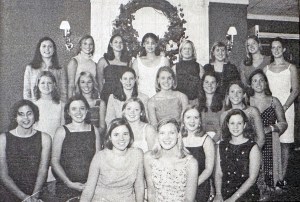Liz Swafford: Recycling and reuse during World War II
Published 11:20 pm Tuesday, June 17, 2014
If you’re new to the whole idea of recycling and reusing everything we can to make less waste, you may not realize that this concept has been around for quite some time. Recycling and reusing helps us manage limited resources by getting the most out of each item through remanufacturing at a factory or repurposing at home. Last October archeologists reported that they had found evidence that our prehistoric ancestors (yes, cavemen) recycled their large broken tools, like flint or bone axes, into smaller utensils used for cutting meat. Some of the tools dated as far back as 1.3 million years ago.
Trending
While reusing flint shards to avoid going to a quarry to find more is somewhat impressive, we don’t have to look much further back in our own country’s history to find outstanding examples of recycling and reuse. At the moment I am completely fascinated by the salvage and reuse efforts of Americans, and even the British, on the home front during World War II (1939–1945). Though I’ll probably never fully understand the experience living during the Great War, I am continuously inspired and proud by what normal people were able to do to support the war effort from home.
As the war progressed and manifested itself in Europe, Africa and the Pacific the need for raw materials to make everything from airplanes to ammunitions bags increased. To meet the demand for raw materials, everyday citizens were required to ration goods, and collect scraps for recycling. While the government confiscated the limited supplies of raw materials like silk and wool, and factories were repurposed to produce military goods, families had to make due with what they had.
Wartime advertisements and propaganda from both countries encouraged citizens and housewives left at home to “Make Do and Mend” or “Make It Do” to keep family and home afloat on war rations. Booklets and articles showed how a men’s suit could be remade into a lady’s skirt and jacket. Others explained how to mend all types of clothes to make them last longer since the purchase of new clothing was subject to rationing. A creative example of making do was highlighted in the Canadian television series “Bomb Girls.” An episode shows the girls painting thin lines on their legs for lack of actual silk or nylon stockings.
Campaigns like “Save Scrap for Victory” encouraged the collection of metal, paper, rubber and rags for recycling to create military goods. Though the effectiveness of scrap collection campaigns within communities was not consistent, many did provide a small but significant source of material. Possibly the most noticeable scrap campaigns were those for metal. Anything metal, from chicken wire to car bumpers, was collected to build tanks, ships, planes and weapons. A single tank would require up to 18 tons of metal, while a ship would use up to 900 tons. Later, rationing of canned goods helped provide tin for packaging food for soldiers overseas.
What’s really interesting is that all of these salvage activities are equivalent to those we consider to be green and eco-friendly today. Car-sharing clubs for carpooling and saving gas are also encouraged for today for reducing emissions and green house gases. Planting a Victory Garden to have a supply of fresh fruits and vegetables for the family and others in the community could be the equivalent of growing organic or even buying local.
The Paper Troopers club initiated by the War Production Board encouraged children to have paper drives to collect scrap paper. Now, local students compete in a recycling contest during the school year to collect mixed paper for recycling. One of the key slogans during war time was “If you don’t need it, don’t buy it.” Today, that would be the equivalent of conserving resources by purchasing only what you will actually use to avoid producing waste.
Trending
A less known aspect of the war effort at home was the salvaging of waste fats and greases from cooking. Women would collect the grease and return it to the butcher who would send it to rendering plants that could process the fats. Glycerin from the waste fats was processed into nitroglycerin and other ingredients useful for explosives, and even lubricant for equipment. Nowadays fats and greases are collected in some restaurants and larger cities are used to make an alternative fuel called biodiesel.
It seems that recycling and reusing is just part of our human ingenuity, and isn’t going away any time soon. The circumstances surrounding the need to do so may be different today than they were in the early forties, but the reasons behind it remain the same. Recycling and reusing at a small or large scale allows us to manage limited resources effectively. Let’s continue to make recycling a common sense, and naturally human thing to do.
Liz Swafford is the recycling and education program coordinator for the Dalton-Whitfield Solid Waste Authority. Have questions about recycling in Whitfield County? Call (706) 278-5001 or email lswafford@dwswa.org.





